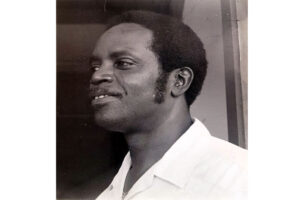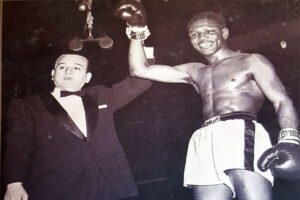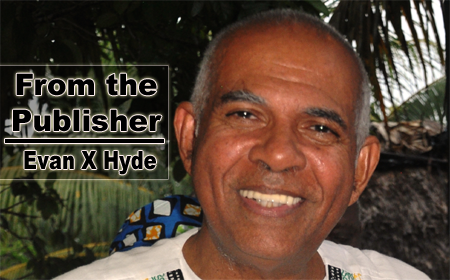Today’s column may seem relatively frivolous to some of you, but it is something I have wanted to do for a long, long time.
I have told you that the boxer Ludwig Lightburn was a fabulous hero for us Belizeans during the middle 1950s. He was the British and Commonwealth lightweight champion and ranked as high as No. 3 in the world.
Lightburn, most observers felt, could have beaten the reigning world lightweight champion, one Joe Brown, but he was never given a shot at Brown’s title. (It was said that Brown and his title were controlled by the mob, which basically controlled boxing back then.) Instead, Ludwig’s manager, Allie Clark, who was linked to the Genovese crime family, made money using Ludwig in “over-the-weight” fights with people like the Cuban welterweight, Isaac Logart. Ludwig ended up suffering an eye injury which ended his career prematurely. Ludwig is still alive in New York City, incidentally. In 1955, when he beat the then no. 2 ranked lightweight in the world, Ralph Dupas, in a nationally televised fight in New York’s famous Madison Square Garden, we in British Honduras listened to the fight on short wave radio (U.S. Armed Forces Radio). Needless to say, our happiness was wild.

It is impossible for you present day Belizean youth to understand how big a deal that fight was for us. British Honduras was a little “backwoods” country. Our airport, Stanley Field, was a tiny thing. It seemed to us youth back in 1955 that nobody in the rest of the world (apart from Jamaica, Guatemala, Honduras, and Panama) knew anything about us. Ludwig had fought his way up through Mexico until he reached Mexico City. He was seen there by Clark, who signed him to a contract and took him to New York.
I could discuss the Ludwig saga for days, because it begins with his fights in Belize (Palace Theater) with Eckert Lewis (who has been ailing from a stroke in Belize City). The Ludwig Lightburn saga includes Ethelbert “Kid” Broaster, who taught Ludwig how to neutralize Eckert’s vaunted left hook.
An older man named Muchin Barrow once told me at Mike’s Club that Broaster had fought for a world title in Arizona in the 1930s under the ring name of “Kid Anselm.” All our roots history was totally oral before AMANDALA. So there is no archival record of Broaster’s fight, but it is for sure he was a brilliant boxing tactician.
And yet, it is not boxing I want to talk about today. It is cricket. I want to tell Herman “Harmie” Brackett, who would be in his eighties in America today, that his 21 not out against England’s MCC cricket team was the greatest sporting feat I have ever seen in this country. The reason is that our Belizeans were completely overmatched at the MCC Grounds in 1960 by the British cricketers. We were real novices. Our best players were being bowled for duck first ball by people like Freddie Truman, the English fast bowler. Then, a tall, lanky youth named Harmie Brackett refused to be humiliated. He stood tall. He was invincible.
Hart Tillett, Darlene Tillett Dunn’s older brother, was a left-handed bowler on the Belize national team. So, I am hereby challenging him to write about that MCC tour and what he remembers of Brackett’s gallant stand. As most of you know, Hart is a world- class writer, so we would be given a treat if he agreed to reminisce about Harmie’s 21 not out.

Belizean youth of today have no idea that in 1960 cricket was a big deal in Belize City, not only in the villages of the Belize District, as is the case today. Back then on weekend afternoons, cricket matches would be played on the old Yarborough Green, at Edwards Park, at BEC Field, two or three matches on the seaside Barracks, and, after MCC was opened in 1960, on The Garden itself.
To my mind, there was a political aspect to the donation of the MCC Grounds to Belize by those notorious cheapskates, the British. Remember, they had expelled Rt. Hon. George Price from London in 1957 and charged him with sedition (not guilty) in 1958. The MCC, in my opinion, was a peace offering by the British, readily accepted by the Belizean leaders. Remember that after the MCC gift came the progressive Ministerial constitution of 1961, self-government in 1964, and the Tower Hill sugar factory right after that.
In the matter of that British peace offering hypothesis of mine, I would ask the remarkable Don Hector Silva to give his opinion. I enjoyed listening to his discourse a couple days ago on Louis Wade’s Belmopan television station about the inside details of that British attack on Mr. Price in 1957.
All post-1950 history of The Jewel is of surpassing importance, and priority must be given to recording these events for the benefit of today’s youth and those who come after.
Power to the people.

